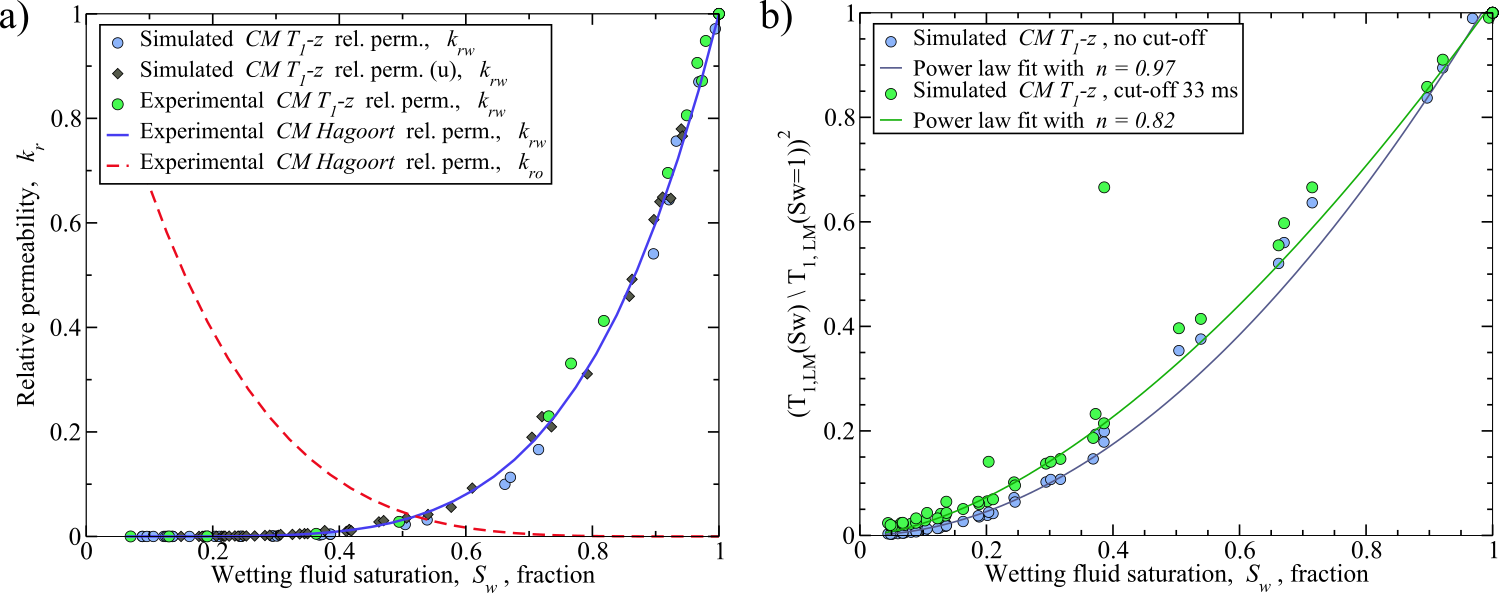Determining relative permeability using simulated and experimental spatially resolved relaxometry - T1-z NMR
- University of New South Wales, School of Civil and Environmental Engineering, Sydney, Australia
Relative permeability is a key petrophysical property commonly used to estimate flow characteristics of petroleum reservoirs. A variety of lab methods is used to measure relative permeability and Nuclear Magnetic Resonance (NMR) has recently become one of them. In recent years 1D Magnetic Resonance Imaging (MRI) [1], NMR T2 profiling [2] and NMR T1 profiling [3] have been applied for the characterisation of rock cores. It has been shown that spatially-resolved NMR in conjunction with centrifuge technique may provide high-quality capillary pressure curves. Combining Burdine and Brooks-Corey models enables the estimation of relative permeability from capillary pressure curves, as show in Figure 1(a), making NMR profiling techniques a powerful tool for the determination of such properties. This approach, however, is indirect and relies on the relationship between capillary pressure and relative permeability, which is known to be complex.
We applied T1-resolved NMR to obtain relative permeability from a set of centrifuged brine saturated rock cores using T1 log-mean values of different transverse slices following correlation proposed by AlGhamdi et al.8, as shown in Figure 1 (b). Measurements were performed on fully saturated and centrifuge-drained rock cores: Bentheimer, Leopard and Castlegate sandstones using the 2 MHz Rock Core Analyzer. The numerical calculations were performed using Morphy [4] wherewith centrifuge capillary drainage were simulated by applying morphological drainage transforms on high-resolution 3D tomograms. Based on the simulation results for the fluid distribution, NMR T1 responses was calculated along the sample using a random walk method. Fluid distribution along the core length for a fully saturated sample and drained state were used to estimate relative permeability.

- [1] Chen Q. and Balcom B. J., (2005), Measurement of rock-core capillary pressure curves using a single-speed centrifuge and one-dimensional magnetic-resonance imaging., J Chem Phys
- [2] Rauschhuber M. and Hirasaki G., (2009), Determination of Saturation Profiles via Low-Field NMR Imaging
- [3] Mitchell J, (2014), Rapid measurements of heterogeneity in sandstones using low-field nuclear magnetic resonance, J Magn Reson
- [4] Arns C.H., AlGhamdi T, and Arns J-Y., (2011), Numerical analysis of nuclear magnetic resonance relaxation-diffusion responses of sedimentary rock
